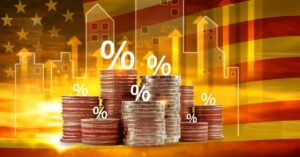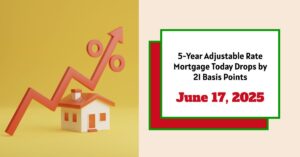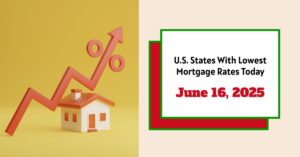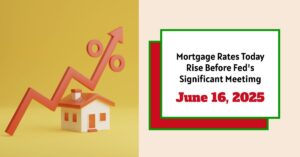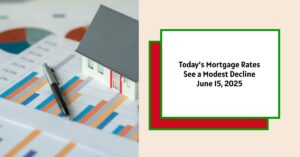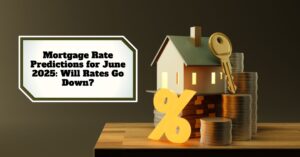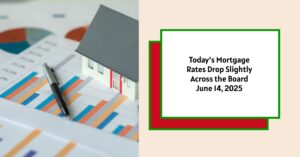Looking for the best mortgage rate today? As of today, June 18, 2025, the states boasting the cheapest 30-year new purchase mortgage rates are New York, California, Colorado, Florida, Connecticut, Massachusetts, New Jersey, Pennsylvania, Utah, and Washington These states offer average rates between 6.67% and 6.89%. Let's dive into what's influencing these rates and why it matters to you.
States With Lowest Mortgage Rates Today – June 18, 2025
Why Mortgage Rates Vary by State: A Deep Dive
It's easy to assume that mortgage rates are universal, but that's simply not the case. I've seen firsthand how localized factors can impact the rates offered to borrowers. Here's a breakdown of the key reasons why mortgage rates differ from state to state:
- Lender Presence: Not all lenders operate nationwide. You'll find regional banks and credit unions that focus on specific states. The level of competition in your state directly influences rates. More competition often translates to lower rates for you.
- Credit Score Averages: Surprisingly, the average credit score in a state can affect rates. States with higher average credit scores are often perceived as less risky, potentially leading to slightly lower rates overall.
- Average Loan Size: The size of the average mortgage in a state plays a role. If people in a certain state are purchasing larger, more expensive homes, the risk assessment and rates might fluctuate accordingly.
- State-Specific Regulations: Each state has its own set of regulations governing the mortgage industry. These regulations can affect the cost of doing business for lenders, which can then be reflected in the rates they offer.
- Lender Risk Management: Every lender has its own internal risk assessment and management strategies. This means that two lenders operating in the same state, serving the same borrower profile, might offer slightly different rates.
The variations above underscore the absolute necessity of shopping around for the best mortgage. Don't simply settle for the first rate you see. Take the time to compare offers from multiple lenders – banks, credit unions, and online mortgage brokers. I can't stress this enough; this is the single biggest thing you can do to potentially save thousands of dollars over the life of your loan.
Understanding National Rate Trends: The Big Picture
While state-specific rates are important, it's also helpful to understand the broader national trends. Currently, the national average for a 30-year new purchase mortgage is 6.91%. This is a slight dip from a mid-May peak of 7.15% but still higher than the 6.50% we saw in March 2025. Remember the two-year low we witnesses in Septemebr of 2024? I do. We're far away from those historic lows.
Here's a quick snapshot of national averages for different loan types as provided by Zillow:
- 30-Year Fixed: 6.91%
- FHA 30-Year Fixed: 7.50%
- 15-Year Fixed: 5.95%
- Jumbo 30-Year Fixed: 6.89%
- 5/6 ARM: 7.06%
States With The Most Affordable Mortgage Rates
According to Investopedia, the following states have the cheapest 30-year new purchase mortgage rates today:
- New York: Average rates around 6.67%.
- California: Average rates around 6.72%.
- Colorado: Average rates around 6.75%.
- Florida: Average rates around 6.78%.
- Connecticut: Average rates around 6.80%.
- Massachusetts: Average rates around 6.82%.
- New Jersey: Average rates around 6.85%.
- Pennsylvania: Average rates around 6.86%.
- Utah: Average rates around 6.87%.
- Washington: Average rates around 6.89%.
States Reporting The Highest Mortgage Rates
On the flip side, these states are reporting the highest 30-year average mortgage rates.
- Alaska: Rates averaging around 6.96%.
- West Virginia: Average hovered around 6.98%.
- Maine: Rates near 6.99%.
- Mississippi: Rates recorded at 7.01%.
- Montana: Mortgage rates averaged to 7.02%.
- Rhode Island: Averages around 7.02%.
- North Dakota: Also near 7.03%.
- South Dakota: Rates around 7.04%.
- Vermont: Averages around 7.04%.
- Wyoming: Rates near 7.05%.
Decoding Mortgage Jargon: Beyond the Teaser Rates
You've probably seen tempting “teaser rates” advertised online. It's crucial to understand that these are often cherry-picked and might not reflect the reality for most borrowers. Teaser rates might come with conditions like:
- Paying points upfront (essentially pre-paying interest)
- Requiring an exceptionally high credit score
- Applying to smaller-than-typical loan amounts
Remember this: the ultimate rate you secure is based on your individual circumstances – credit score, income, debt-to-income ratio, and the specific loan product you choose.
What Drives Mortgage Rate Fluctuations? The Macro View
Mortgage rates don't exist in a vacuum. They're influenced by several macroeconomic factors, including:
- The Bond Market: Keep a close watch on the bond market, especially the 10-year Treasury yield. Mortgage rates tend to track the movement of these yields.
- Federal Reserve Policy: The Federal Reserve's monetary policy decisions have a significant impact. The Fed's actions regarding bond buying and funding government-backed mortgages play a crucial role.
- Competition: As mentioned earlier, competition among lenders – both traditional and online – impacts rates.
As Investopedia points out, it is difficult to attribute rate changes to one specific factor. These elements interact, so it's more like a complex recipe than a simple equation.
The Fed's Role: A Quick Recap
Let's briefly look at the Fed's actions over the past few years. The article also pointed this out, and I think its important to summarize it here:
- The Fed ended its bond-buying program in March 2022.
- It aggressively raised the federal funds rate to combat inflation.
- It began cutting rates, albeit slowly, with a notable pause occurring in early 2025.
Read More:
States With the Lowest Mortgage Rates on June 17, 2025
Are Mortgage Rates Expected to Go Down Soon: A Realistic Outlook
Looking Ahead: What Does the Future Hold?
Predicting future mortgage rates is like predicting the weather – never a sure thing! However, by keeping an eye on the factors discussed above – bond market trends, inflation data, and Federal Reserve policy announcements – you can get a sense of where rates might be headed. Real estate investors, pay close attention to the economic releases that impact bond yields.
Final Thoughts:
The mortgage market can seem overwhelming, but by understanding the key factors that influence rates and taking the time to shop around, you can make informed decisions. Remember, buying a home is one of the biggest financial decisions you'll ever make. Don't be afraid to ask questions, seek professional advice, and do your homework. Good luck!
Invest in Real Estate in the Top U.S. Markets
Investing in turnkey real estate can help you secure consistent returns with fluctuating mortgage rates.
Expand your portfolio confidently, even in a shifting interest rate environment.
Speak with our expert investment counselors (No Obligation):
(800) 611-3060
Also Read:
- Will Mortgage Rates Go Down in 2025: Morgan Stanley's Forecast
- Expect High Mortgage Rates Until 2026: Fannie Mae's 2-Year Forecast
- Mortgage Rate Predictions 2025 from 4 Leading Housing Experts
- Mortgage Rates Forecast for the Next 3 Years: 2025 to 2027
- 30-Year Mortgage Rate Forecast for the Next 5 Years
- 15-Year Mortgage Rate Forecast for the Next 5 Years
- Why Are Mortgage Rates Going Up in 2025: Will Rates Drop?
- Why Are Mortgage Rates So High and Predictions for 2025
- Will Mortgage Rates Ever Be 3% Again in the Future?
- Mortgage Rates Predictions for Next 2 Years
- Mortgage Rate Predictions for Next 5 Years
- Mortgage Rate Predictions: Why 2% and 3% Rates are Out of Reach
- How Lower Mortgage Rates Can Save You Thousands?
- How to Get a Low Mortgage Interest Rate?
- Will Mortgage Rates Ever Be 4% Again?



